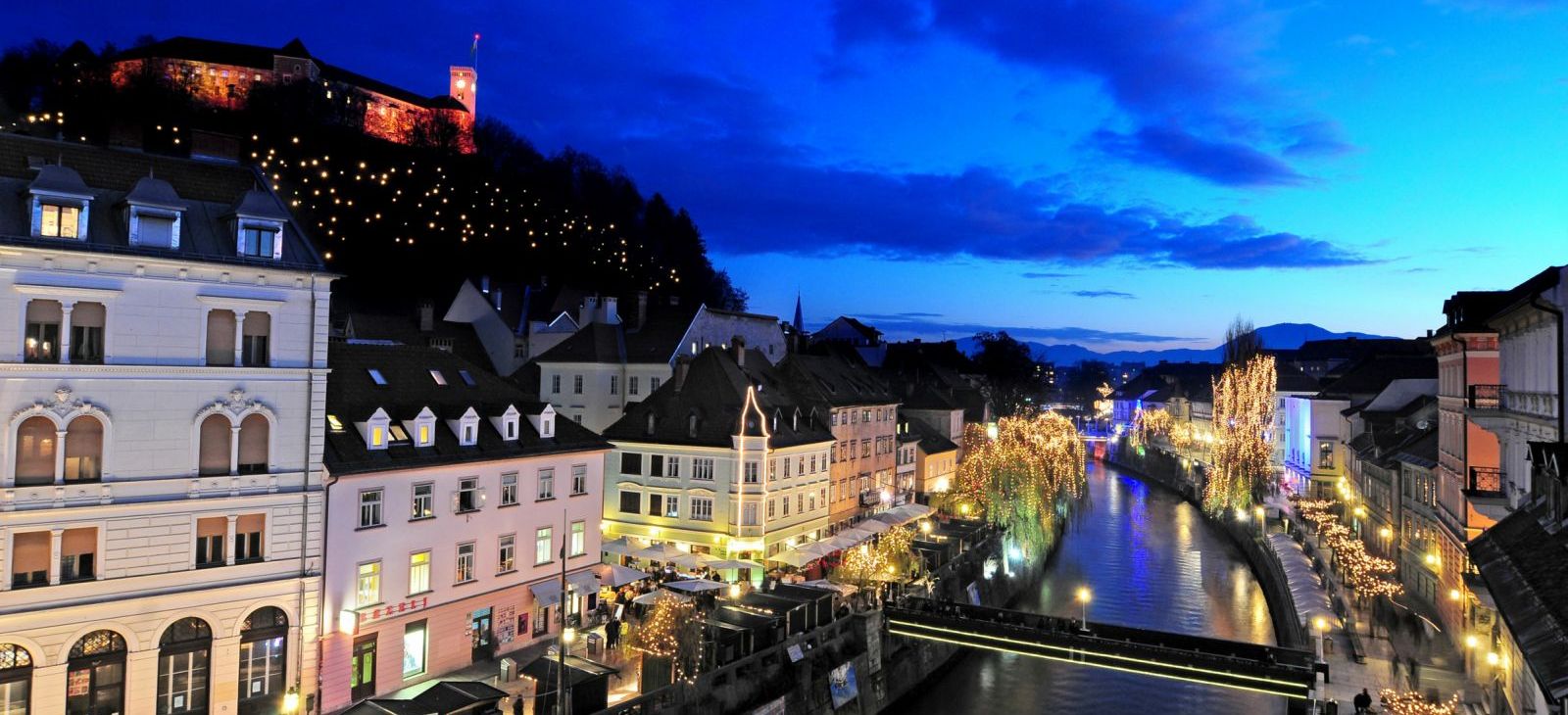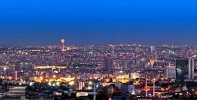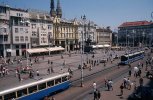
Ljubljana, the capital city of Slovenia - the Balkan’s country of castles, picturesque and dynamic city of parks and full of surprises - for centuries managed to maintain friendly and relaxed atmosphere of a small town. This region is characterized by the traditional hospitality, diverse nature, pleasing small cities, castles, country churches with rich artistic heritage and quality restaurants with local dishes.
This political, economic and cultural center of the Republic of Slovenia is located on the river Ljubljanica (altitude: 293 meters above the sea-level), in central Slovenia, where the alpine world meets the karstic. These two created unique natural and cultural features, such as Ljubljana Marshes, wetland and the triset known for its prehistoric cultures that lived in pile dwellings and for its rare animal and plant species, as well as the mountain plateau of Great Mountains in the Kamnik Alps, with the oldest pastoral areas in Europe and mountain ski resort, mysterious forests and the famous hills with numerous holiday homes, interesting underground caves and karstic fields.
Legend about the origin says that Ljubljana was founded by the Greek mythological hero Jason and his companions, the Argonauts, who went on trip to Colchis to steal the Golden Fleece and fled across the Black Sea, to the Danube, Sava and Ljubljanica River. They stopped at a large lake near the source of Ljubljanica and disassembled their ship to be able to carry it to the Adriatic Sea, where it was reassembled and they returned to Greece. The lake was abode of the monster that Jason fought, defeated and killed. This monster, which is now known as the Ljubljana’s dragon, has found its place at the top of the castle tower depicted on the coat of arms of this city.
The evidence that this area was inhabited since the ancient times is now located in the Museum of Ljubljana. In 2002, archaeologists found the remains of the world’s oldest made between the 3350 and 3100 BC wheel at Ljubljana Marshes. The wheel was made from ash wood, measuring 72 centimeters in diameter and having a 124 - centimeters - long axel from oak wood.
It is considered that around 2000 BC the area around the lake was inhabited by people - hunters, fishermen, stockbreeders and primitive farmers - living in the wooden dwellings build on stilts driven into the marsh ground or lake bottom. To make it easier to navigate, they used canoes made from hollowed tree trunks. As the Ljubljana Gateway has always had a key geographical position, it saw many migrations of numerous tribes and nations, but the first tribe that settled and stayed in this area were the Venetians and later on the Illyrians, the Celtic-Illyrian tribe Iapydes, until the 3rd century BC - when another Celtic tribe - Taurisci settled there.
Emona is the earliest known name of Ljubljana and it is assumed to be of Celtic origin. In the 1st century BC this city was conquered by the Romans and it became a strategic stronghold fortified with massive walls, which played an important role in numerous wars. Emona has its patron goddess Equrna and in her last days it became an important early Christian center where trade flourished greatly. It was completely destroyed in mid-fifth century by the Huns and their leader Attila, at the same time when the Western Roman Empire fell. Long afterwards Emona was wrapped in darkness.
At the end of the 6th century the Slavs came and built a village below the hill on which is now Ljubljana’s Castle. The village was gradually transformed into a medieval town and, in the 9th century, fell under the rule of the Franks.
The name of Ljubljana (Luwigana) was mentioned for the first time in 1146. Already in the 13th century, the city became larger, the main town of Carniola and an important crossroads. Rapidly evolving, it consisted of three urban parts including Old Square, Town Square and New Square - each one surrounded by a wall. There were five city gates and three urban cores which were connected with two bridges: Spodnji or Špitálské most (the Lower Bridge) and Zgornji most (the Upper Bridge). In 1220, Ljubljana was granted city rights, minted its own money at Ljubljana Castle and its inhabitants, mainly craftsmen, were organized in guilds. In 1461, after its fall under the Habsburg monarchy, the Ljubljana Diocese was founded and Ljubljana’s Church of Saint Nicholas became its first cathedral.
In 1701, in Ljubljana was founded Academia Philharmonicorum, one of the first institution of this kind outside Italy. Some of the honorary members of its immediate successor, the Philharmonic Society, were the composers Joseph Haydn, Ludwig van Beethoven and Johannes Brahms and violinist Niccolo Paganini. In the 18th century, was also dug the canal to dry out the Ljubljana barja.
During the period from 1809 till 1813, Ljubljana was the capital of the government of the Illyrian provinces (Napoleon's Illyria). In 1821, there was held in the Congress of the Holy Alliance.
In the first half of the 19th century, the city's appearance changed considerably. The banks of the Ljubljanica River were decorated and several new stone and iron bridges were built. At that time, Ljubljana was home to the greatest Slovenian poet Prešern, known by Zdravljanica sonnet, which was later adopted as the national anthem of Slovenia. In 1895, the earthquake caused large-scale destruction of the city.
The First World War affected Ljubljana only indirectly. In 1918, it became not only the capital of the province of Carniola, but of the whole Slovenia. That same year, after the collapse of the Austro-Hungarian Empire, Slovenia became part of the Kingdom of Serbs, Croats and Slovenes, and Ljubljana Slovenia’s administrative, political and cultural center. In the following years National Gallery (in 1918), University of Ljubljana (in 1919) and Academy of Arts and Sciences (1938) were established.
During the Second World War, Ljubljana was occupied first. After the April War in 1941, Ljubljana got under Italian occupation and became the center of the Italian government in the Ljubljana Province (Provincia di Lubiana) which was directly connected to Italy. In September 1943, after the capitulation of Italy, the Germans took it over and imposed terrible terror with the help of quislings and traitors. Despite this, in Ljubljana was constantly led battle against the occupiers and traitors and from there were sent the financial aid and warriors - partisans. Ljubljana delivered over 11 000 soldiers to the National Liberation Army of Yugoslavia, whose units released Ljubljana on 09 May 1945.
After The Second World War, Slovenia entered the union and became one of the six republics in the Socialist Yugoslavia. Rapid economic development that attracted many immigrants followed and fueled the expansion of the city.
On 23 December 1990, the citizens of Slovenia decided and voted for independent and sovereign state. Independent Slovenia was proclaimed on 25 June 1991, with Ljubljana as official Slovenia’s capital. Today Ljubljana is divided into five municipalities: Bežigrad, Center, Moste - Polje, Šiška and Vič - Rudnik.
It is important to mention that Ljubljana was declared the city - hero of the Second World War.

